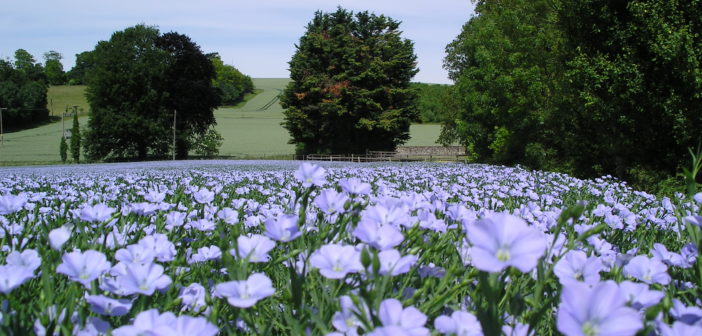Premium Crops Ltd, experts in breeding and marketing spring linseed, is saying that with the difficulties of planting winter cereals this year and the positive returns from linseed, growers should seriously consider growing one of their high omega-3 linseed varieties. Nigel Padbury of Premium Crops says that spring linseed fits well into the rotation, has variable drilling dates from February to early May and offers the opportunity to reduce black-grass and wild-oats across the farm.
Spring linseed also has low growing costs and a positive effect on wheat yields when grown after this crop. “We are thinking that this spring there will be more than 25,000 hectares of spring linseed and we have the necessary seed supplies.”
Nigel also reminds growers if they go for the high ALA linseed varieties they will be offering the highest ever contract price of £365/tonne plus a £20 premium on top of that. “This is the highest price we have offered for the best part of 6 years,” says Nigel. “With yields of 2.4 to 2.5 t/ha, growers can be achieving an attractive gross margin of over £1000/ha.”
With many years experience, Premium Crops is a position to offer the best agronomy advice to growers. “Spring linseed can be drilled late which means that glyphosate can be used in a stale seedbed to reduce weed burden. Then with both Avadex products, Avadex 15G Excel and Avadex Factor, having EAMU’s for spring linseed, they can be applied pre-emergence in linseed and provide a good level of grass-weed control. Avadex Factor can also be mixed pre-emergence with Callisto (mesotrione) which adds to broad-leaved weed and meadow-grass control. Spring linseed can therefore be used as a serious break crop, effectively reducing both black-grass and wild-oats across the farm.”
“Avadex is the only non ACC-ase black-grass option in linseed, via its EAMUs and so offers a unique mode of action for a herbicide in spring linseed,” says Barrie Hunt, Technical Manager for Gowan.
Barrie says in a typical year 15-20% black-grass germinates in the spring, but this spring we could be seeing much higher levels than this. The weed expert John Cussans confirms that wet soils create anaerobic soil conditions and this environment induces dormancy in black-grass. We do not know how much of the autumn population is affected, but there can be no room for complacency this spring.”
“Both Avadex products, granules and liquid, are recommended at their full black-grass dose rate. So you are much more likely to get a positive result.”
“Avadex Granules and Avadex Factor can also be used in spring barley and both have EAMUs in canary grass. Nigel Padbury reckons that there could be 5000 hectares of this crop, Phalaris canariensis, grown in the UK this spring. “We have a high demand for canary seed for wild bird food, but currently most of it is imported. It is estimated that £120 million is spent on bird seed for wild birds now in the UK.”
“Don’t forget that tri-allate was originally introduced as a wild-oat herbicide and excellent control is still being delivered over 50 years later!” says Mr Hunt. Avadex products also give a useful contribution to broad leaved weed control, including speedwell, red dead-nettle, forget-me-know, poppy, mayweed, cleavers, pansy, chickweed and charlock. They provide a useful start to reducing weed pressure and offer options in a crop where herbicides are few and far between.
“With Avadex EAMU’s in spring linseed and in canary grass we have the much needed opportunity to break the cycle of black-grass on that field and provide a much reduced and less challenging weed population to deal with in following crops,” Barrie concludes.




